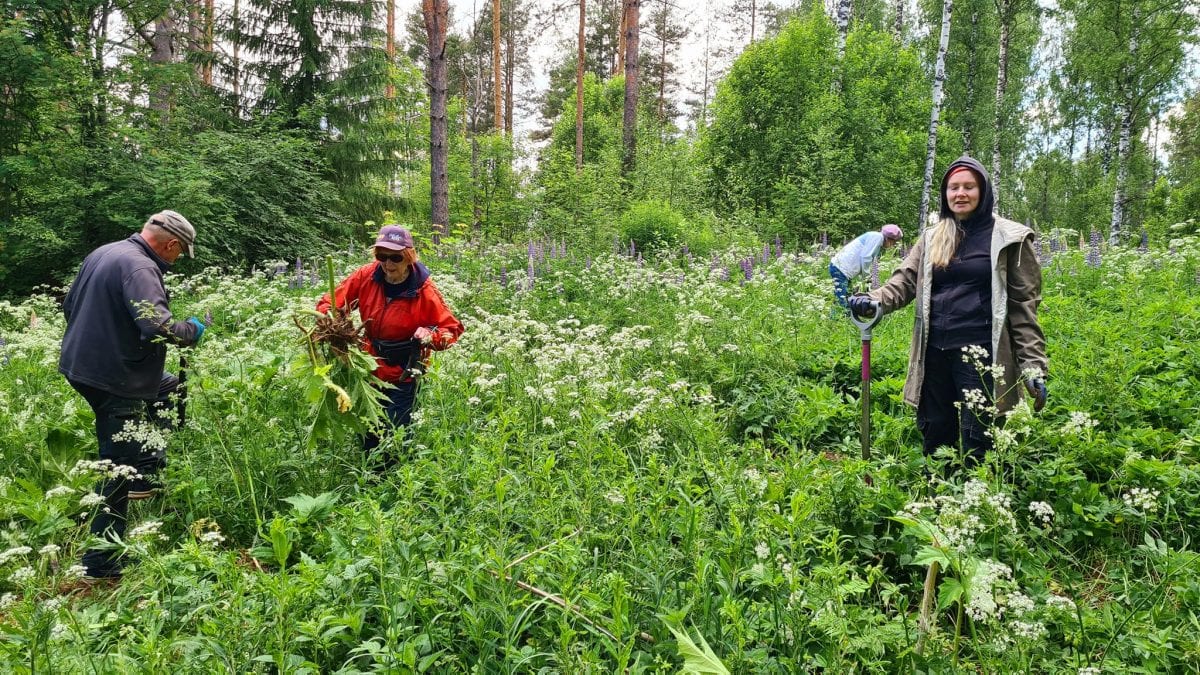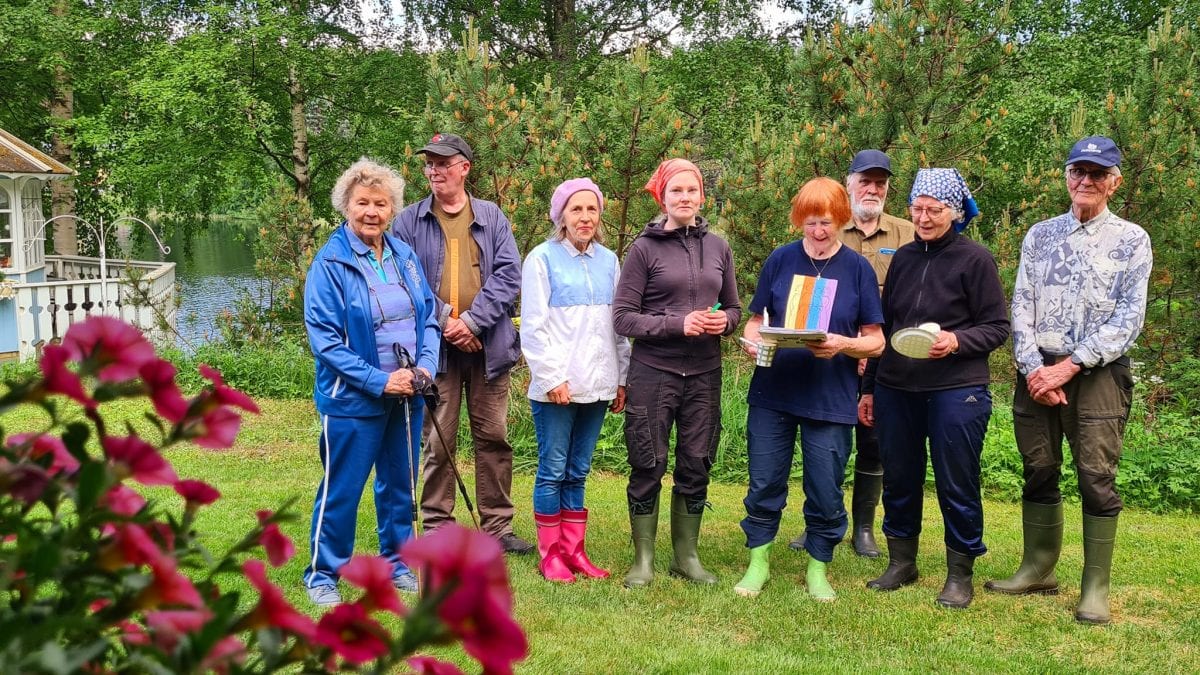
In the 1970s and 1980s, hogweeds were a source of delight in many gardens. The plant quickly produces many new seedlings, and often people wanted it in their own yards for its handsome flowering and good coverage. This was also the case in Sulkava. In the end, a momentary fascination turned into an age-old nuisance. In the centre of Sulkava, there is a single hogweed bush left. It’s no longer visible in the village landscape, but it has spread from its original habitat to a nearby meadow and the edge of a forest. The local association of Rural Women’s Advisory Organization in Sulkava regularly works to combat the problem. In June 2024, the Rural Women’s Advisory Organization’s Impin päivä – a national day of volunteer IAS work – inspired many to participate in the eradication efforts.

Eradication efforts begin in early spring
Sanna Reponen, chairwoman of the local association of Rural Women’s Advisory Organization in Sulkava, and her team of volunteers have found that the best results are achieved when the control work is done early in the spring or in early summer, before the seedlings have grown too large. The seedlings can thus still be dug out with roots and all. Even then, the task is not easy, but working together is rewarding. At the beginning, control work was carried out by cutting off the flower heads. Now that the problem is more under control, there are hardly any new flower heads and volunteers can concentrate on uprooting the seedlings altogether. A team of volunteers work together to bag the invasive plants, and the landowner then makes sure the waste is properly disposed. Volunteers have worked together on the issue for almost ten years. “Sometimes we have a larger group of volunteers, sometimes a smaller one,” says Reponen.
Hogweeds are not the only invasive alien species that the association’s activists have worked to eradicate through joint efforts. In previous years, garden lupin has also been dug up. Many people also have areas in their own backyards that require control efforts, including Reponen. She regularly weeds out Himalayan balsam from the edges of fields and from shorelines, which are of great scenic value. The Sulkava village is a scenic gem and has been recognised as one of Finland’s Nationally Valuable Landscape Areas.

Positive developments
Although hogweeds have been a nuisance for years, persistent and regular control work has gradually begun to bear fruit. The hogweed growths have weakened and the number of plants declined. Sanna Reponen is particularly pleased that the team of volunteers has managed to work on this for so long, and that the results of many years of work point towards a time when not a single seedling will emerge in the area.

Working together is rewarding
“The best thing about working together is being able to chat and, of course, sit down to have a cup of coffee together,” Reponen laughs. While uprooting, you can talk about a lot of things and often we meet new people there as well. Getting to know them is always rewarding.

Photos: Liisa Ruottinen-Partanen
Text: Leena Lahdenvesi-Korhonen
